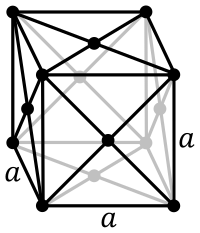
Photo from wikipedia
In the present study, the contemporary indoor radon activity concentration and the surface-deposited 210Po activity were measured in 65 Romanian dwellings. The activity of trapped 210Po on the glass surface… Click to show full abstract
In the present study, the contemporary indoor radon activity concentration and the surface-deposited 210Po activity were measured in 65 Romanian dwellings. The activity of trapped 210Po on the glass surface was measured using the (CR-LR) difference technique. The retrospective radon activity concentration estimated on the basis of age-adjusted 210Po activity was found to have a geometric mean of 318 Bq m-3, being higher than the geometric mean (250 Bq m-3) of the contemporary indoor radon measurements, measured with two types of track detectors (RSKS and Radtrak2®). By applying Lin's concordance correlation coefficient, a substantial strength of agreement (rC = 0.94) was obtained between RSKS and Radtrak2® results, respectively a poor agreement (rC = 0.71) between the retrospective and contemporary methods. The ratio between contemporary and retrospective radon concentrations has a geometric mean of 0.8 and range from 0.2 to 3.9.
Journal Title: Radiation Protection Dosimetry
Year Published: 2018
Link to full text (if available)
Share on Social Media: Sign Up to like & get
recommendations!